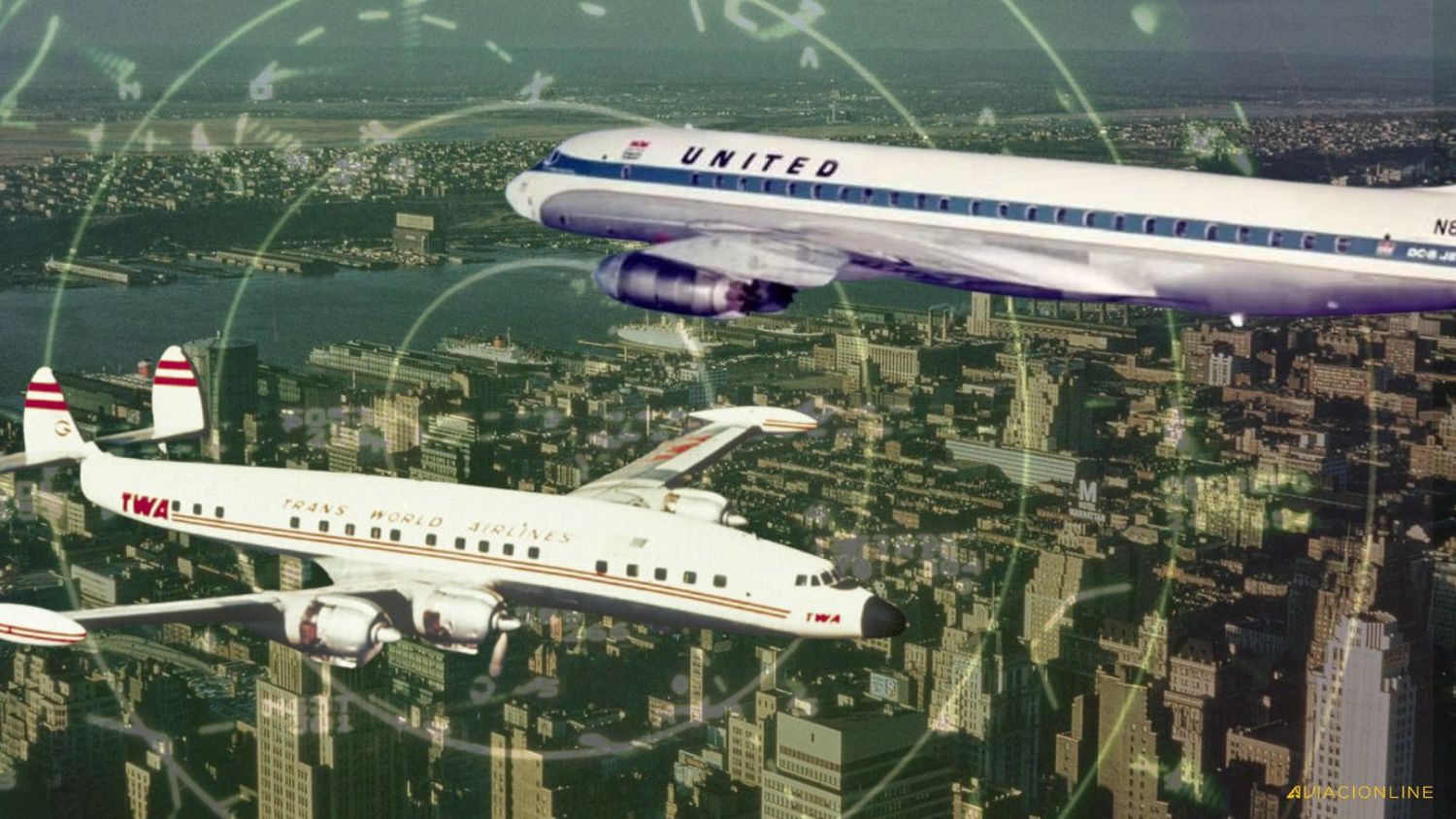Tragedy in the Skies Over New York: 64 Years Since the Accident That Marked a Turning Point in Air Traffic Control
On December 16, 1960, a mid-air collision over New York became one of the deadliest aviation disasters in U.S. history, claiming 134 lives and marking a turning point in air traffic control systems and aviation safety.
This was, until 1968, the aviation accident with the highest number of fatalities worldwide and the first to result in the complete destruction of a DC-8.
The collision
United Airlines flight 826, a Douglas DC-8 (registration N8013U and named «Mainliner Will Rogers»), en route from Chicago to Idlewild Airport (now John F. Kennedy International Airport), collided with Trans World Airlines (TWA) flight 266, a Lockheed L-1049 Super Constellation (Star of Sicily, N6907C), traveling from Dayton, Ohio, to LaGuardia Airport. The collision occurred at 10:33 a.m. over Staten Island amid dense cloud cover, which reduced visibility and complicated navigation.
The DC-8, flying at 557 km/h, was 19 kilometers off its assigned route due to a navigation error. It struck the fuselage of the Constellation, tearing off its right wing.
The investigation revealed that the DC-8 lost much of its right wing and one engine but remained airborne for another 90 seconds.

Immediate consequences
The Constellation crashed on Staten Island, instantly killing all 44 passengers and crew onboard. Some debris from the aircraft fell into New York Harbor.

Meanwhile, the DC-8, carrying 84 people, spiraled uncontrollably into a residential area in Park Slope, Brooklyn, destroying several buildings. Six people on the ground also perished, raising the total death toll to 134.

Eyewitnesses described scenes of chaos and horror. Flames engulfed rows of buildings, and debris from both aircraft was scattered across streets and rooftops. Rescue efforts were hindered by the intensity of the fires and the freezing December temperatures. Initially, only one passenger from both planes survived the impact: Stephen Baltz, an 11-year-old traveling alone on the DC-8, but he sadly passed away the following day.
Impact on aviation safety
The tragedy highlighted the need to improve air traffic control and navigation systems. At the time, controllers largely relied on pilot-reported positions and rudimentary radar systems, which were inadequate for managing the increasing volume of air traffic. This accident spurred a comprehensive reform of the U.S. air traffic management system, accelerating the adoption of radar-based systems and stricter aircraft separation rules.
The then Civil Aeronautics Board (CAB) outlined key steps to enhance and strengthen air traffic control system efficiency:
- A special regulation (SR-445) was issued requiring pilots operating under instrument flight rules (IFR) to report in-flight failures of navigation or communication equipment.
- A program was established requiring all turbine-powered aircraft to be equipped with distance measuring equipment (DME) by January 1, 1963. A year later, all aircraft with a maximum takeoff weight over 12,500 pounds had to have this equipment installed.
- Radar transfer service for arriving and departing aircraft in the New York area was expanded compared to pre-accident levels. Nationally, full-time radar transfer service also increased significantly.
- Controllers were instructed to issue advisories to incoming jet aircraft to reduce their speed to the appropriate holding pattern at least three minutes before reaching the holding fix.
- The name and identification signal of the Stroudsburg, Pennsylvania VOR (SSB) were changed to Taunersville (TVE) due to potential confusion with the Solberg VOR (SBJ).
- A speed rule was enacted prohibiting aircraft from exceeding 250 knots within 30 nautical miles of a destination airport and below 10,000 feet, except when tactical aircraft safety requirements mandated a higher minimum speed, which would then apply.

On March 8, 1961, President Kennedy directed FAA Administrator Najeeb Halaby to conduct a scientific and technical review of aviation facilities and research and development programs, aiming to design a long-term plan to ensure efficient and safe air traffic control in the United States.
In response, the FAA formed the Project Beacon task force, which released its report on September 11, 1961 (a striking coincidence of dates). This document emphasized the need for substantial improvements to address projected aviation growth and recommended a significant reorientation of modernization efforts initiated in 1957. Among the key proposals was the use of an Air Traffic Control Radar Beacon System (ATCRBS) and increased use of general-purpose computers.
Following the 1956 mid-air collision over the Grand Canyon (also involving United Airlines and Trans World Airlines), significant advances had already been made in air traffic control procedures and the broader use of radar for flight surveillance. However, the system still relied heavily on crew navigation to position aircraft in assigned airspace and on flight position reports for controllers to prevent collisions. During the United 826 and TWA 266 accident, the system could not independently determine altitudes, and it was assumed that flights would adhere to received instructions.
The Project Beacon report recommended the implementation of secondary radar, which uses aircraft-installed transponders to transmit unique codes and altitude information, enabling continuous tracking.
The proposed ATCRBS system offered significant improvements by providing 4,096 unique codes and altitude reporting, simplifying controllers’ tasks and enhancing system efficiency. These recommendations were quickly adopted following President Kennedy’s directive on November 7, 1961.
Despite the tragedy, this accident drove key reforms that significantly improved global aviation safety. It underscored the importance of advanced air traffic control technology and preventive measures, helping transform modern air travel.


Comentarios
Para comentar, debés estar registrado
Por favor, iniciá sesión